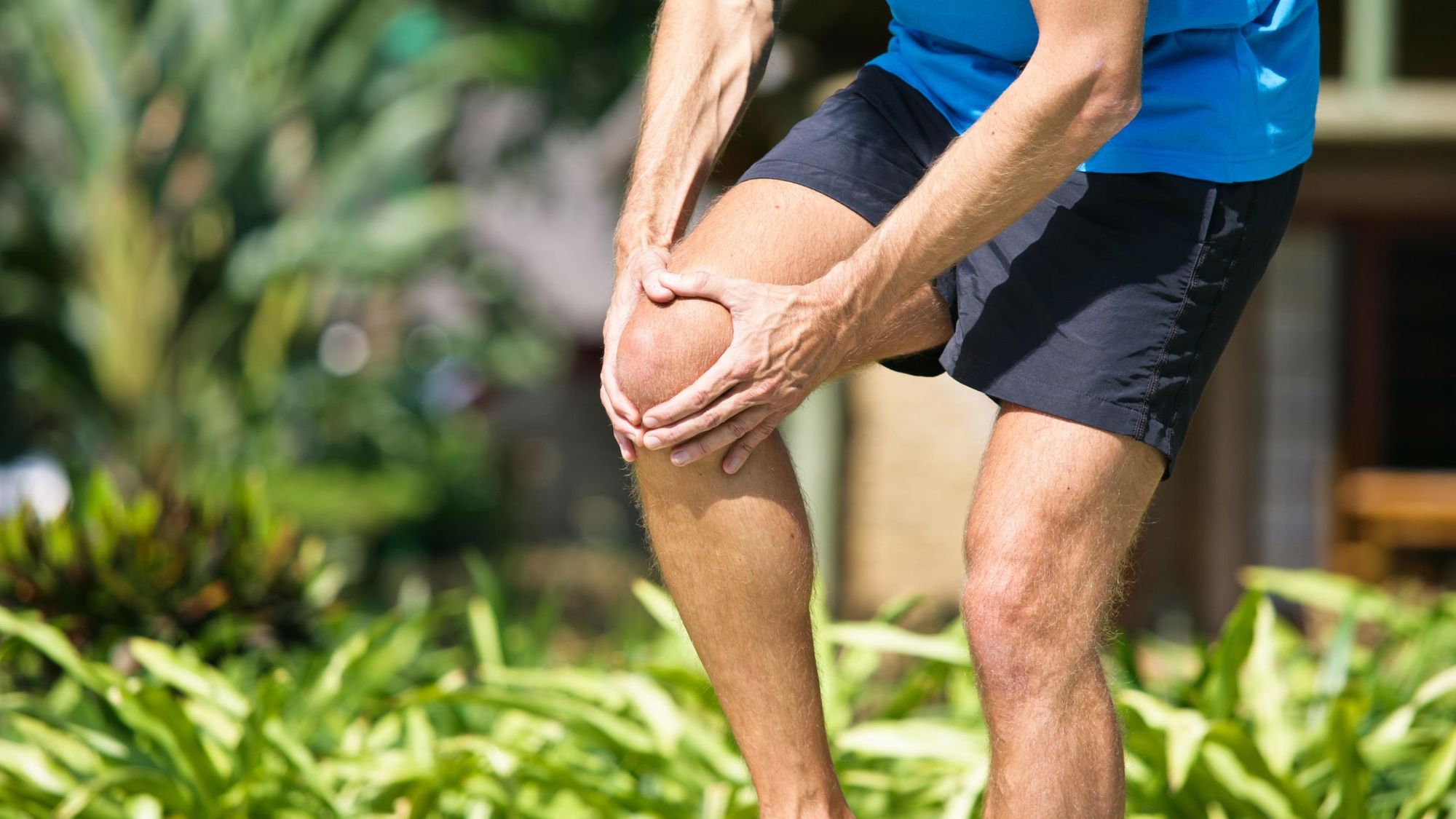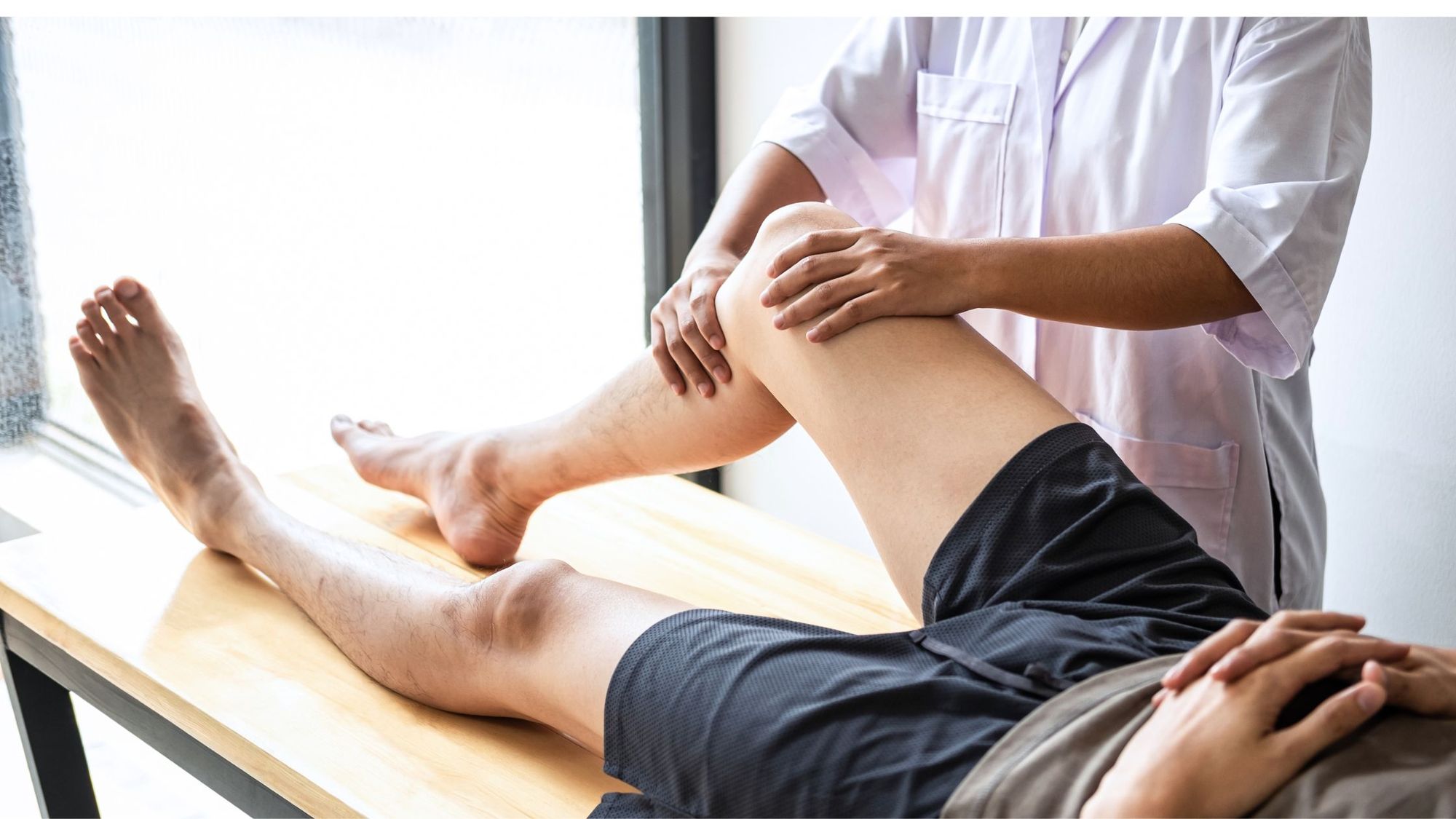
Knee pain and knee injuries are quite common, especially for athletes, runners, or active people. Hyperextended knees are one example of knee-related health concerns that people struggle with. The fact that knee pain is common doesn’t change the fact that it can be very painful as well as difficult to recover from.
A hyperextended knee can be quite uncomfortable, but it’s also easy for a medical professional to spot, easy to treat, and you should be able to make a full recovery. The important thing is that you take care of yourself and seek medical attention. In this guide, we will take you through the basic information as well as remedies for naturally hyperextended knees.
What is a Hyperextended Knee?
A hyperextended knee is a knee injury that is caused by the knee bending too far backwards. It can be quite painful and often causes swelling, but the good news is that this is an injury that’s very easy for a doctor to spot, which makes diagnosis fairly quick.
What Causes a Hyperextended Knee?
Hyperextended knee issues could be a possible cause of knee pain after running. A hyperextended knee is usually caused by high-impact, such as landing too hard or stopping very suddenly when you were running. This also includes sudden stops when skiing, such as hitting a snow bank or snow log.
This is why the issue is so commonly seen in contact sports or extreme sports, and it is frequently found in athletes.
What are the Symptoms of a Hyperextended Knee?
When you find yourself suffering from a hyperextended knee, you will know it has happened. Usually, you can feel your knee bend backwards in a way that is out of line with your leg.
Some of the most common symptoms that you will experience with a hyperextended knee include:
- Moderate to severe pain in your knee
- Swelling
- Weakness
- Instability
- Visible bruising
When you have a hyperextended knee, you may also find yourself suffering from mobility issues. This is because it becomes increasingly difficult to bend or straighten the knee, and this can be due to the instability of the knee, the fact that it has been weakened, damaged ligaments, or even the swelling.
The severity of the symptoms will depend on how far back the knee was bent at the time of the injury. Similarly, the amount of damage done to the ligaments and tissue will also help to determine the pain levels and swelling experienced.

What are Some Common Remedies for a Hyperextended Knee?
The treatment that you receive for a hyperextended knee will depend on the severity of the injury, which is why it is essential you speak to a doctor as soon as possible after you hurt yourself.
The most common treatment for a hyperextended knee is known as RICE. This is where the road to recovery begins, and RICE has 4 key steps: Rest, Ice, Compression, and Elevation.
Rest
During the rest period, you can’t take part in any sports, and you will likely be asked to relax a little more so that your knee can recover. In some cases, it might be recommended that you wear a leg brace so that you get more support.
You might need to undergo physical therapy in order to restore your range of motion, and you may need to use pain or anti-inflammatory medication to help ease the symptoms and make things more bearable.
Ice
It’s simple yet effective, and you should apply ice to the affected area of the knee for 15 minutes at a time throughout the day. It helps to reduce the swelling, which means it can also help relieve some of the pain you’re experiencing.
Just remember to always use a towel (or another barrier) between the ice and the skin to avoid causing any damage to your body.
Compression
A compression wrap for your knee is used to reduce the pain and swelling, which aids in recovery. As a result of this, it can also help to provide your knee with some support. You can buy compression wraps from your local pharmacy.
Elevation
You need to keep the injured knee elevated as much as possible, and the rule of thumb is that the knee should be lifted above the heart. You can use cushions as padding, but make sure it’s up and resting most of the day.
This does mean you will likely have to spend a lot of time lying down, but it’s a good excuse to catch up on any TV you might have missed.
What are the Treatments for Severe Cases of Hyperextended Knees?
There are much more severe cases that can occur, where a hyperextended knee might require surgery in order to repair the ligaments or realign the knee itself.
There is a pair of ligaments in the knee that is known as the ACL, and this is the most common one to be damaged as a result of the injury. In some cases, it is possible that there will be multiple ligaments and sections of the knee that will require surgical repair.
What Kind of Exercises Can Help Naturally Hyperextended Knees?
When meeting with your doctor or physical therapist, you will likely discuss exercises that can be done following your injury to help regain motion and assist in the recovery process.
Some of the most beneficial exercises that are recommended as treatment are:
- Swimming
- Gentle hamstring stretches
- Low-impact stationary cycling
- Straight leg raises
- Wall sits
- Lateral step-up
- Quad sets
When you start these exercises, they should be as gentle as possible so as not to put too much strain on your knee. Over time, they will become harder and more intense so that they work alongside the increasing strength of your joints.
This is why it is essential that any exercises and recovery methods are discussed with, and approved by, your doctor or physical therapist before you start. After all, if you make the injury worse, you will increase your chances of needing surgery.
How Long Does it Take to Recover from a Hyperextended Knee?
In the least severe cases, recovery from a hyperextended knee only takes 2-4 weeks. This is provided that you stick to your prescribed recovery method, and engaging in RICE will also help.
In cases where surgery is required, it can take months to recover fully. Often, this is a minimum of six months (and often longer) before you will start to see the results. However, despite the long recovery time, you will still likely make a full recovery.
Whether you have had surgery or not, your doctor will still likely recommend physical therapy to ensure that you regain your strength and your full range of motion.
The Bottom Line
A hyperextended knee can be incredibly painful to deal with, and while it is a common injury, that doesn’t make it any less difficult. The diagnosis process is fairly smooth, and while recovery takes a few weeks in most cases, you should be up and good to go in no time.
There are also some great tricks you can use for recovery, including the RICE method and some fantastic standard exercises that will help things along. Most people make a full recovery, and it is rare for there to be any lasting effects. Just make sure you get plenty of rest and follow the doctor’s orders.
What’s Your Genetic Risk of Injury?
Genetically speaking, you might be at higher risk for certain types of injuries such as knee injuries, muscle cramps, or achilles injuries. Find out your genetic risk for injury, as well as the optimal workout program for you based on your genetics, by taking a CircleDNA test. Read your genetic fitness report for more information.
References:
OrthoInfo, ACL Injuries:https://orthoinfo.aaos.org/en/diseases–conditions/anterior-cruciate-ligament-acl-injuries/
Health Line, Hyperextended Knee: Symptoms, Treatment, Recovery Time: https://www.healthline.com/health/fitness-exercise/hyperextended-knee
Knee Pain Explained, Hyperextended Knee Injury: https://www.knee-pain-explained.com/hyperextended-knee.html






